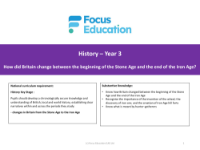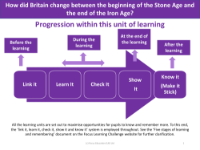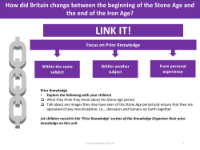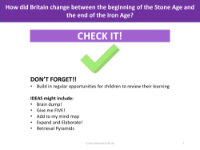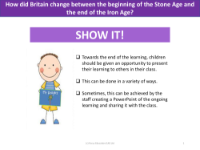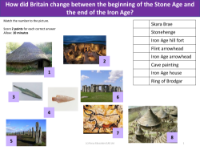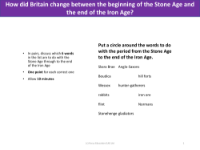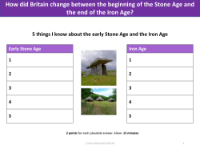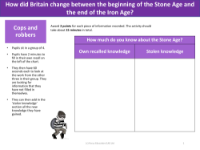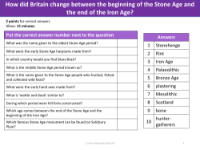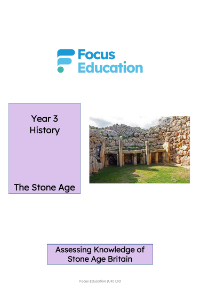Knowledge organiser - Stone Age - Year 3
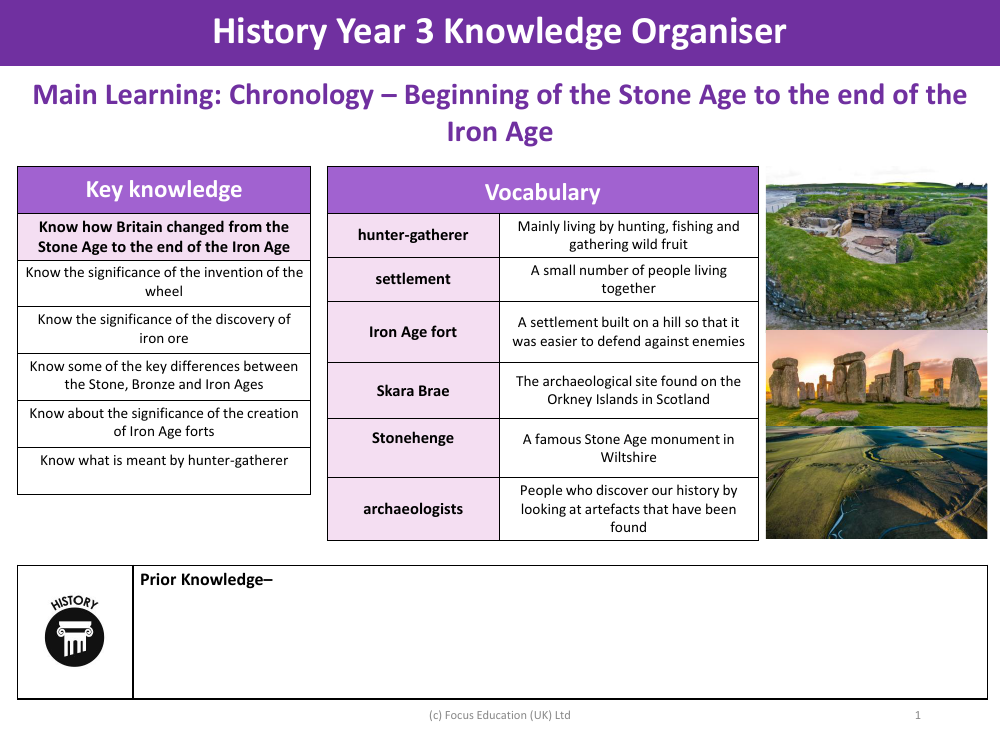
History Resource Description
The Year 3 History Knowledge Organiser for the Stone Age provides essential vocabulary and key knowledge points for students to understand the prehistoric period in Britain, from the beginning of the Stone Age to the end of the Iron Age. The vocabulary section introduces terms such as 'hunter-gatherer', which refers to early humans who survived by hunting, fishing, and collecting wild fruits. It also covers 'settlement', a place where a small community lives together, and 'Iron Age fort', which describes a fortified settlement often located on a hill for strategic defense. 'Skara Brae' is highlighted as a significant archaeological site in Scotland, while 'Stonehenge' is noted as a renowned Stone Age monument in Wiltshire. The term 'archaeologists' is defined as individuals who study history through the analysis of discovered artefacts.
The key knowledge section outlines what students should learn about the period, including the transformation of Britain through these ages, the importance of the wheel's invention, and the discovery of iron ore. Students are expected to recognise the main differences between the Stone, Bronze, and Iron Ages and the importance of creating Iron Age forts. Additionally, they should have a clear understanding of the term 'hunter-gatherer'. The main learning focus is on chronology, tracing the timeline from the Stone Age's onset to the Iron Age's conclusion. This knowledge organiser serves as a foundation for grasping the vast changes that occurred during these periods and the evolution of human society in Britain.
